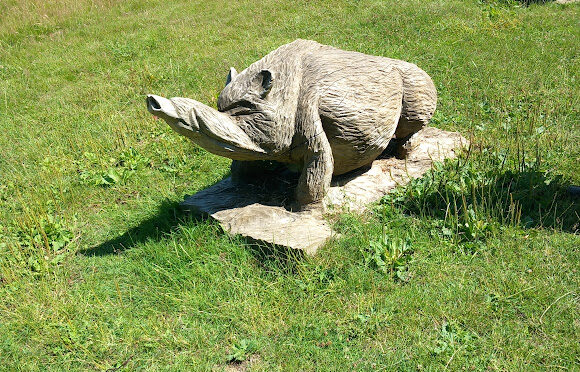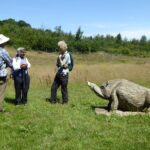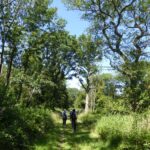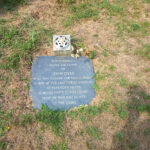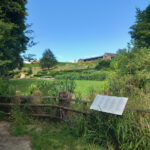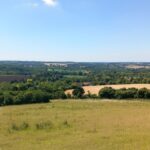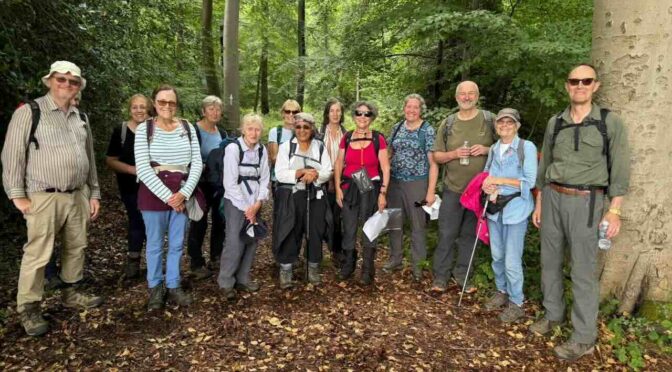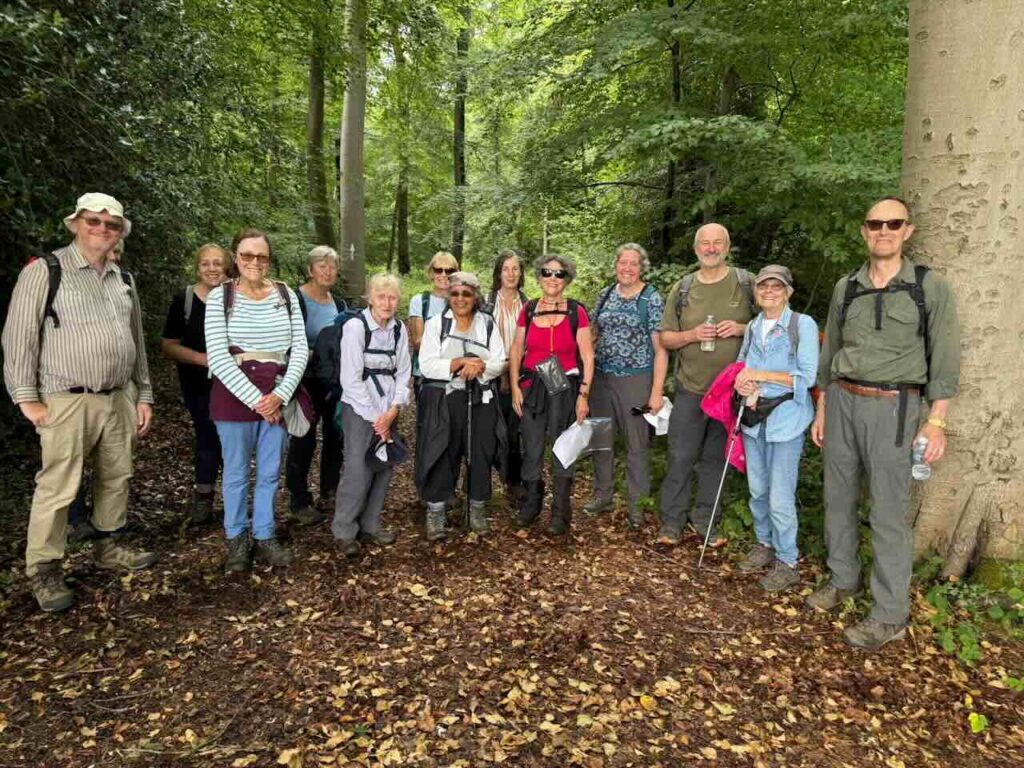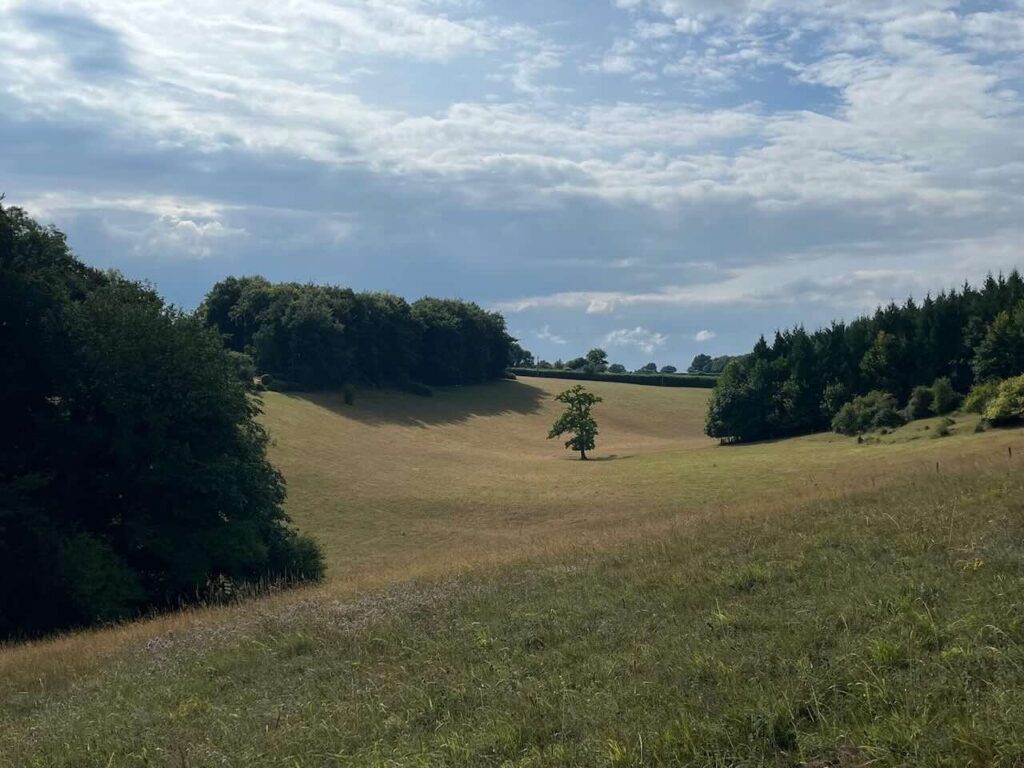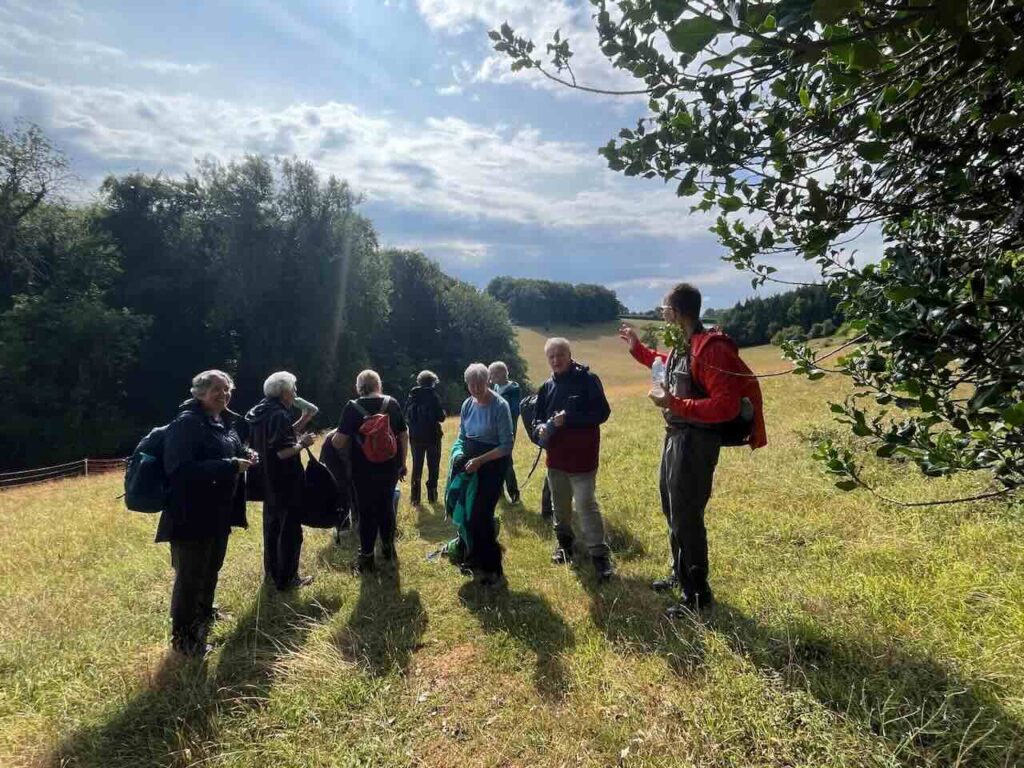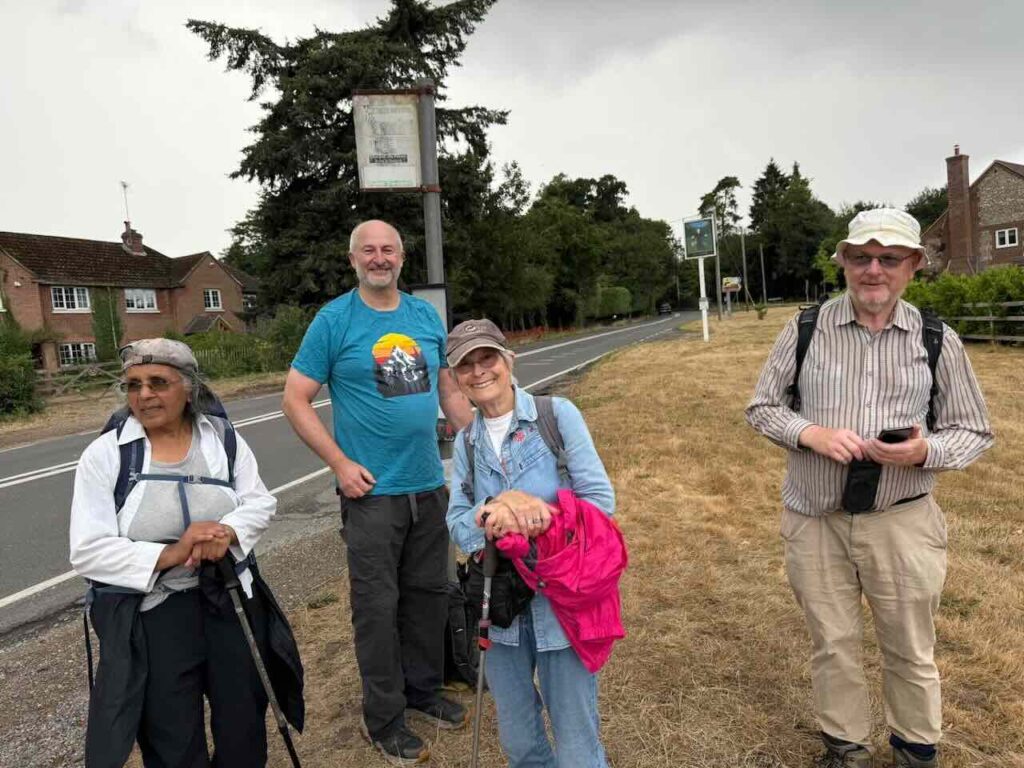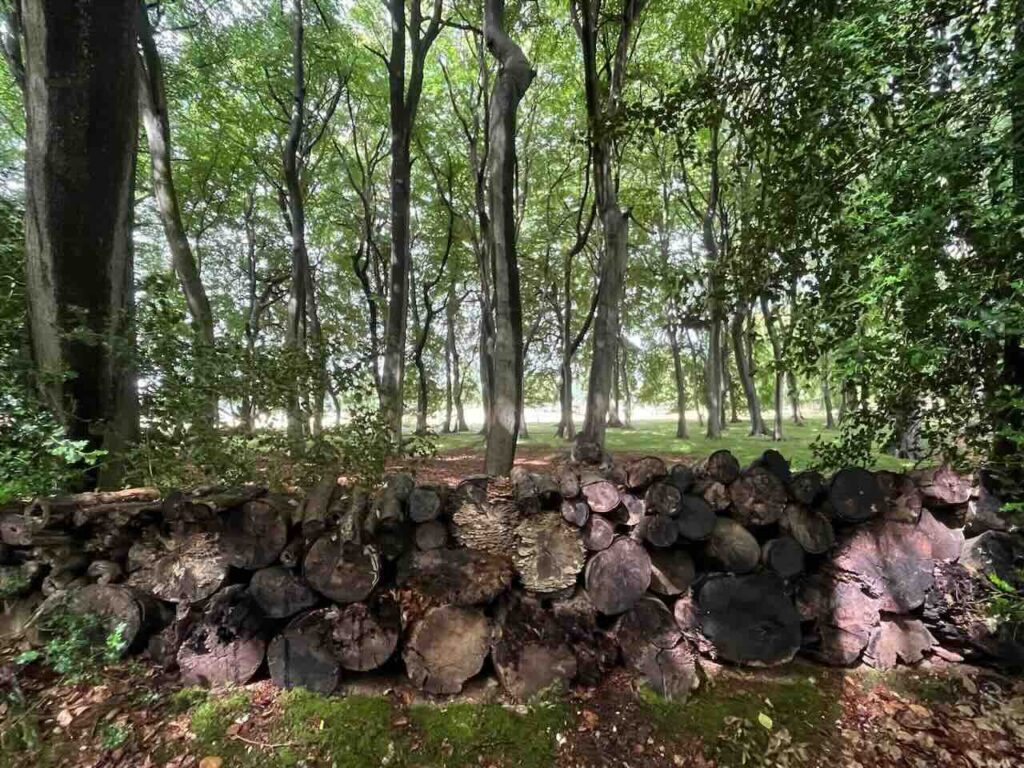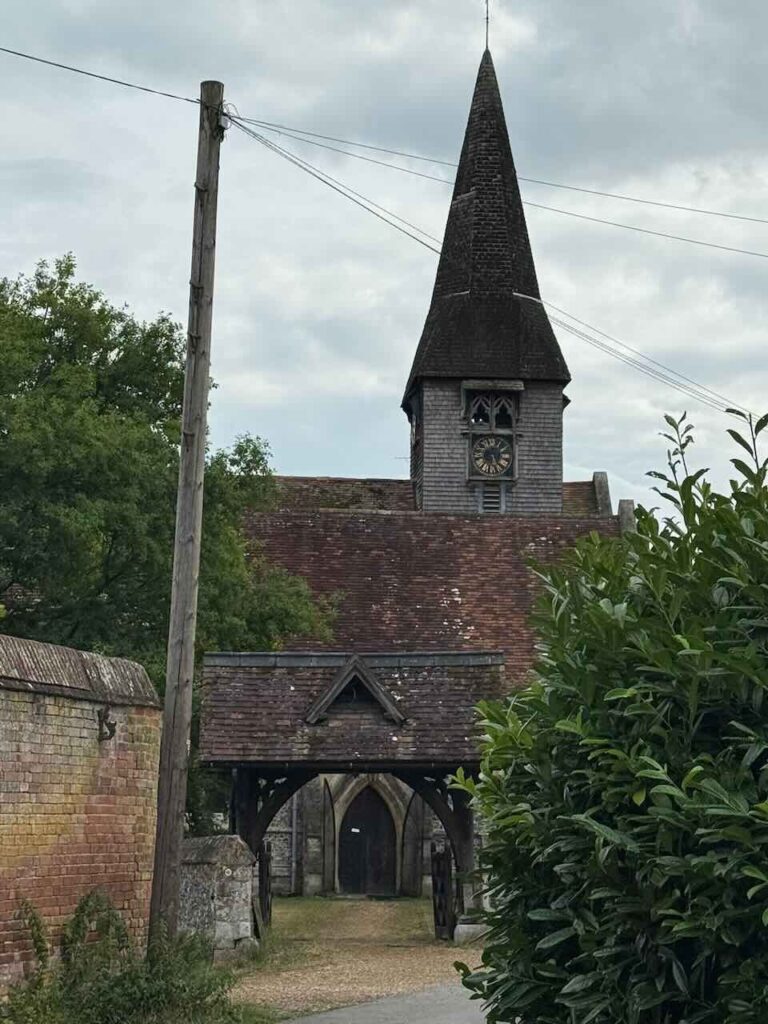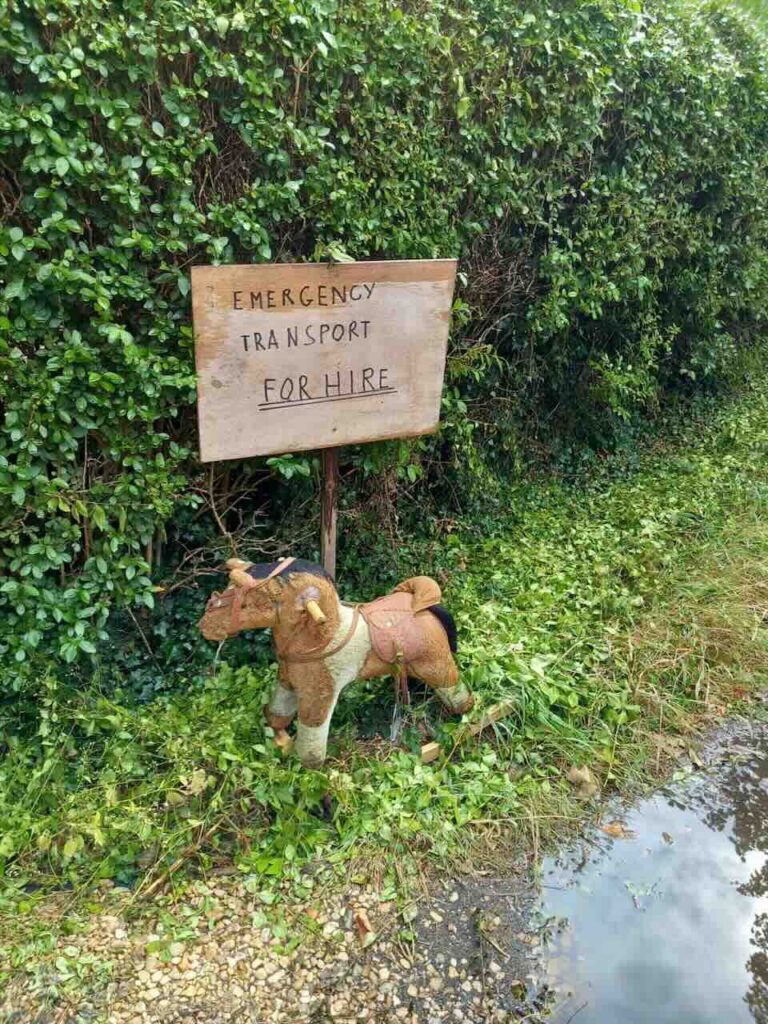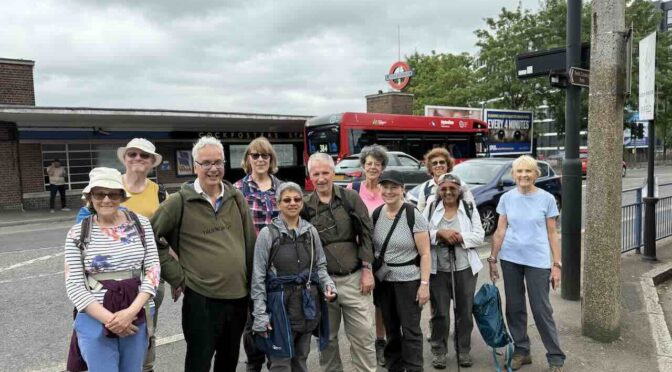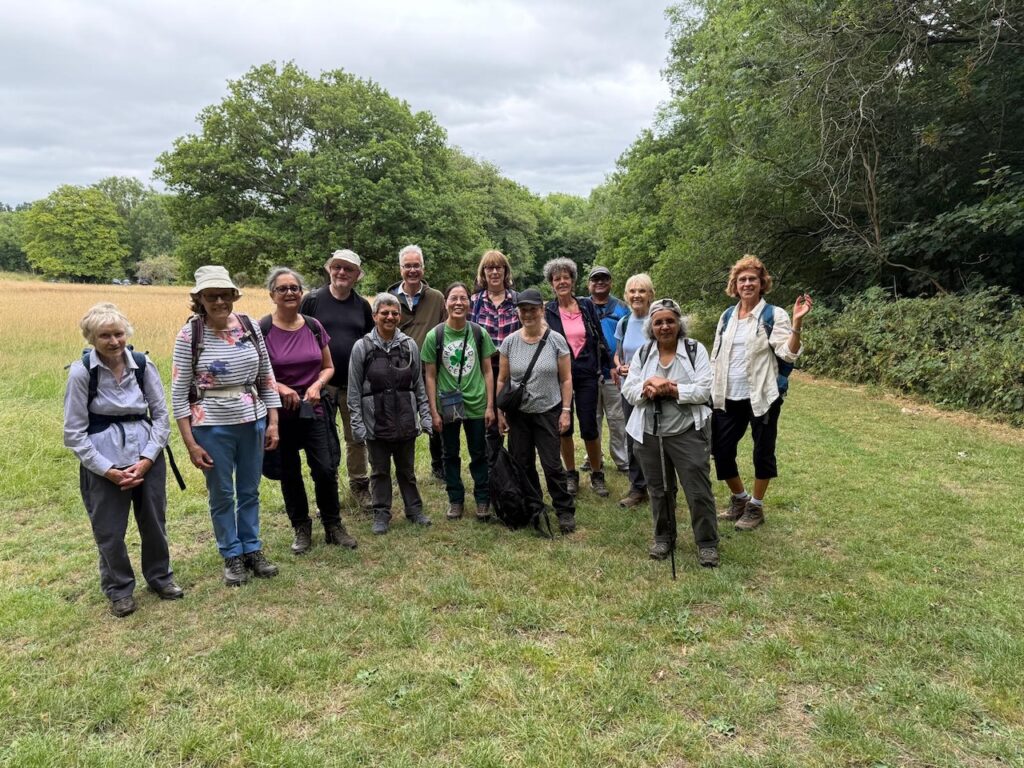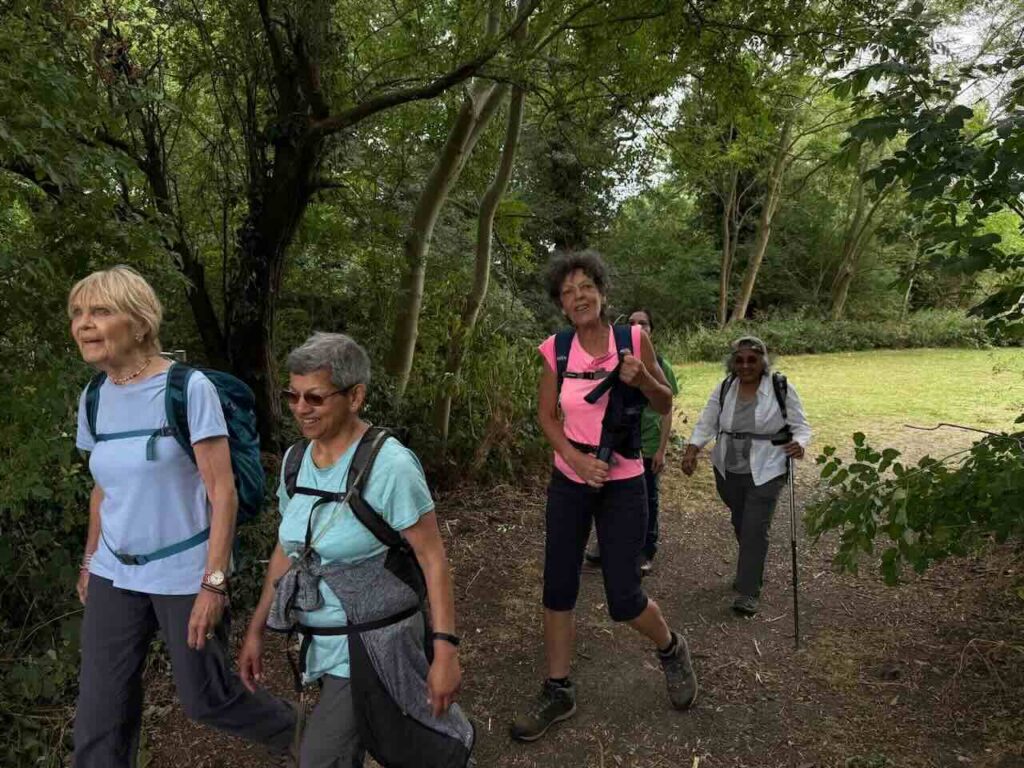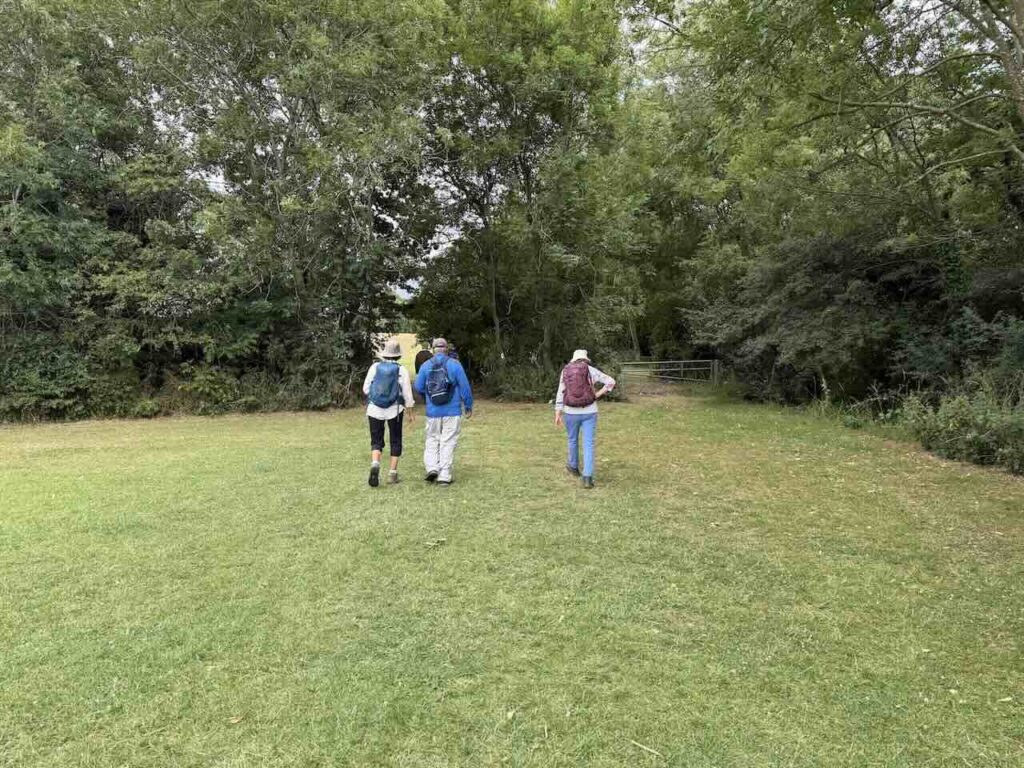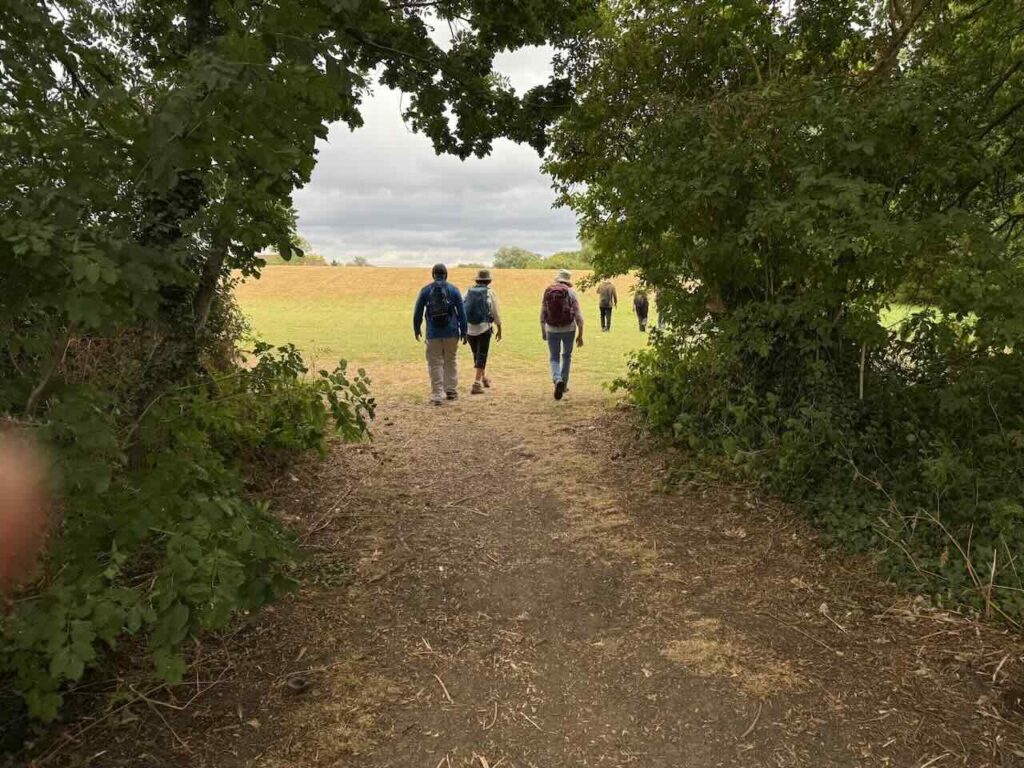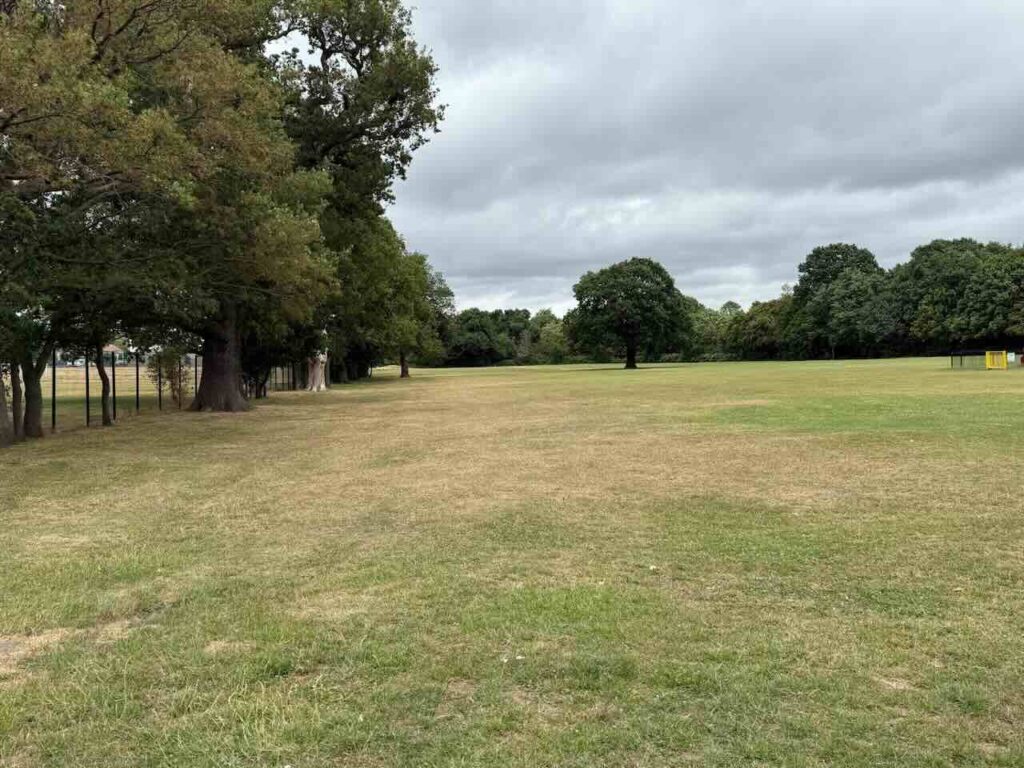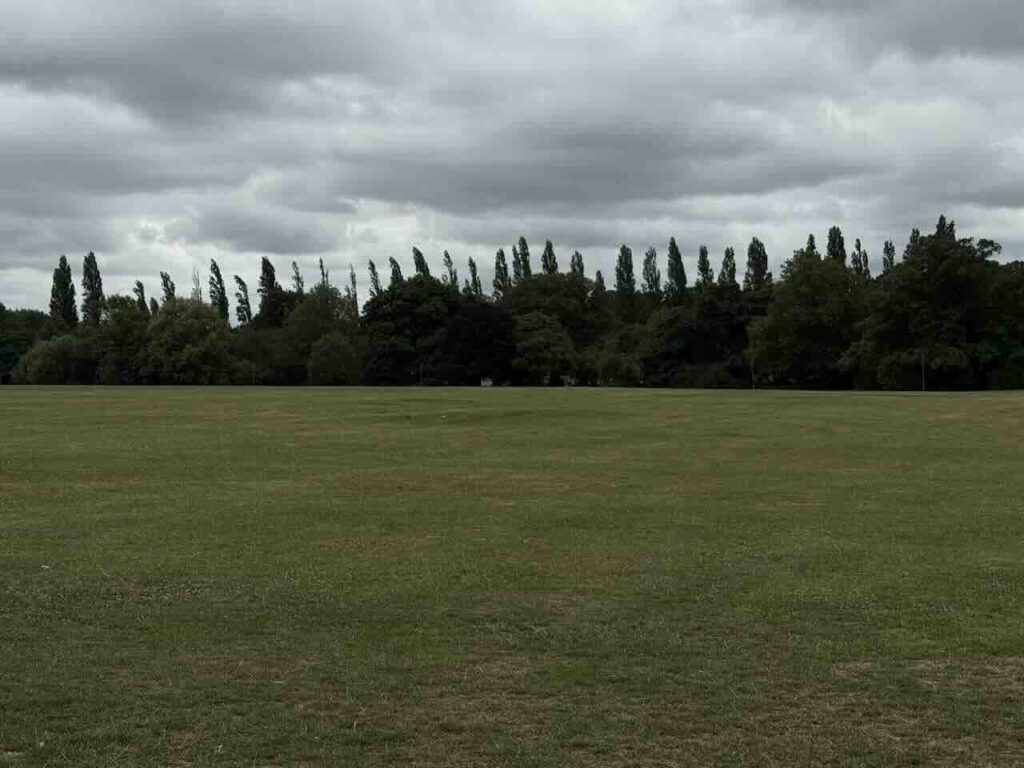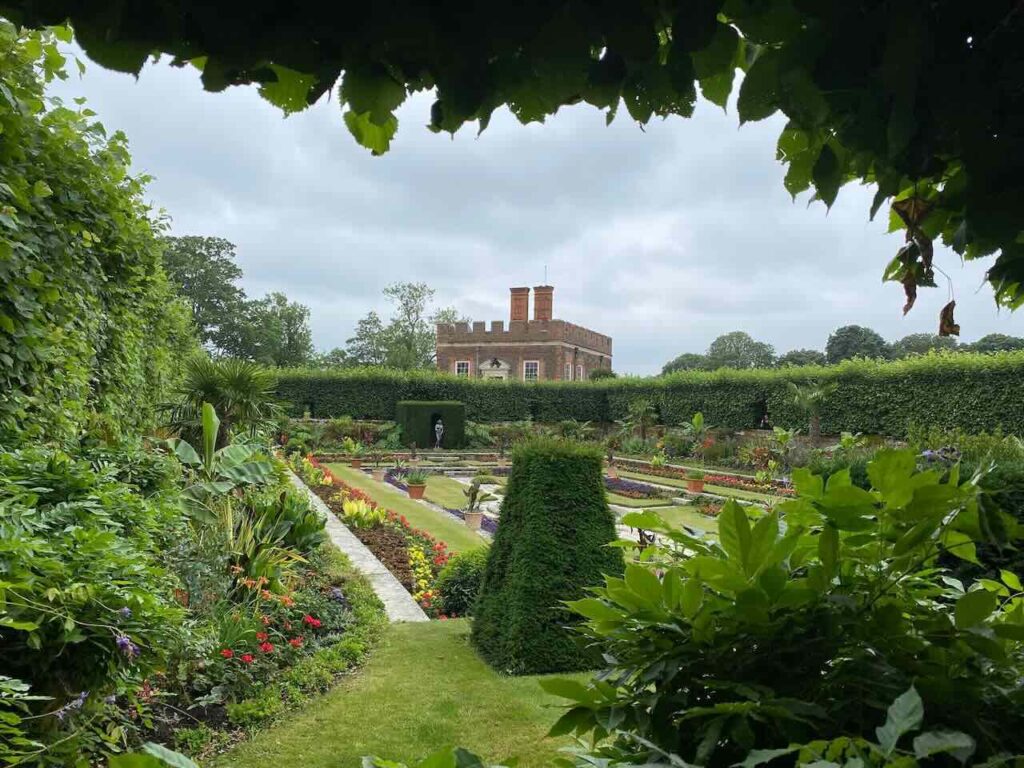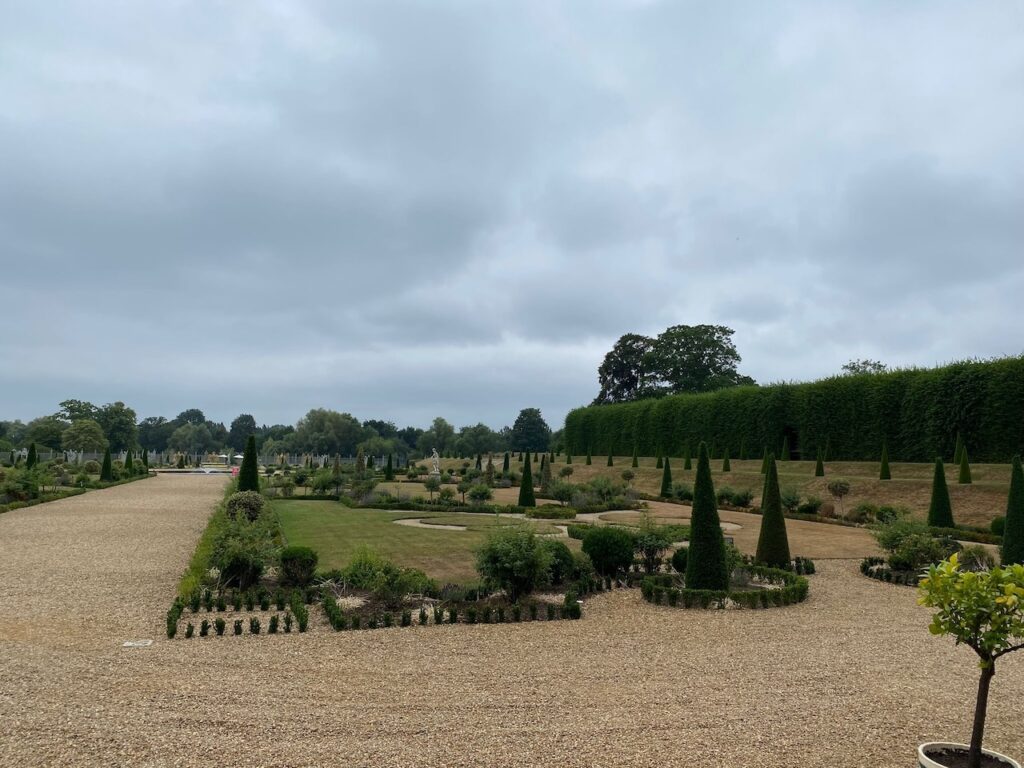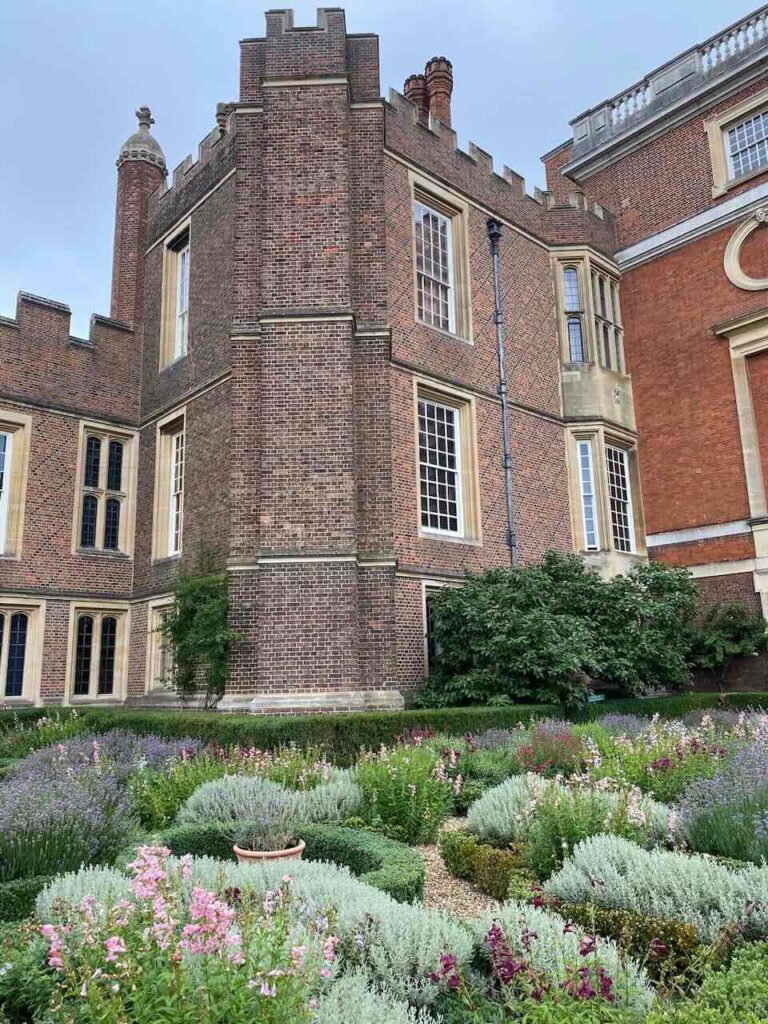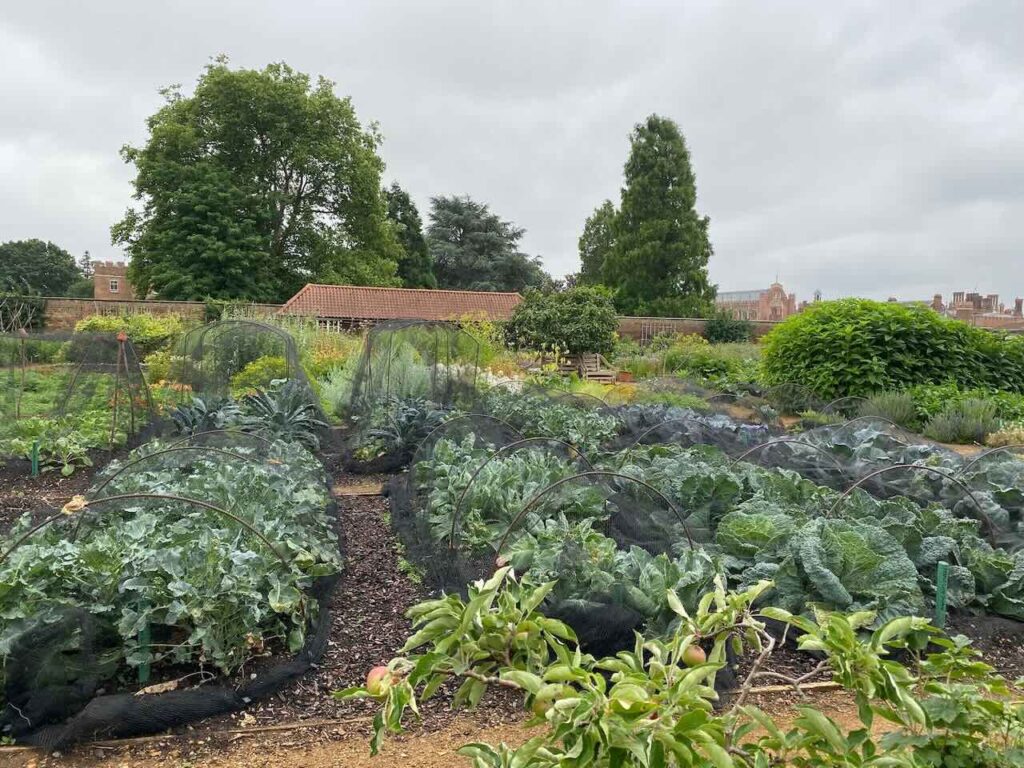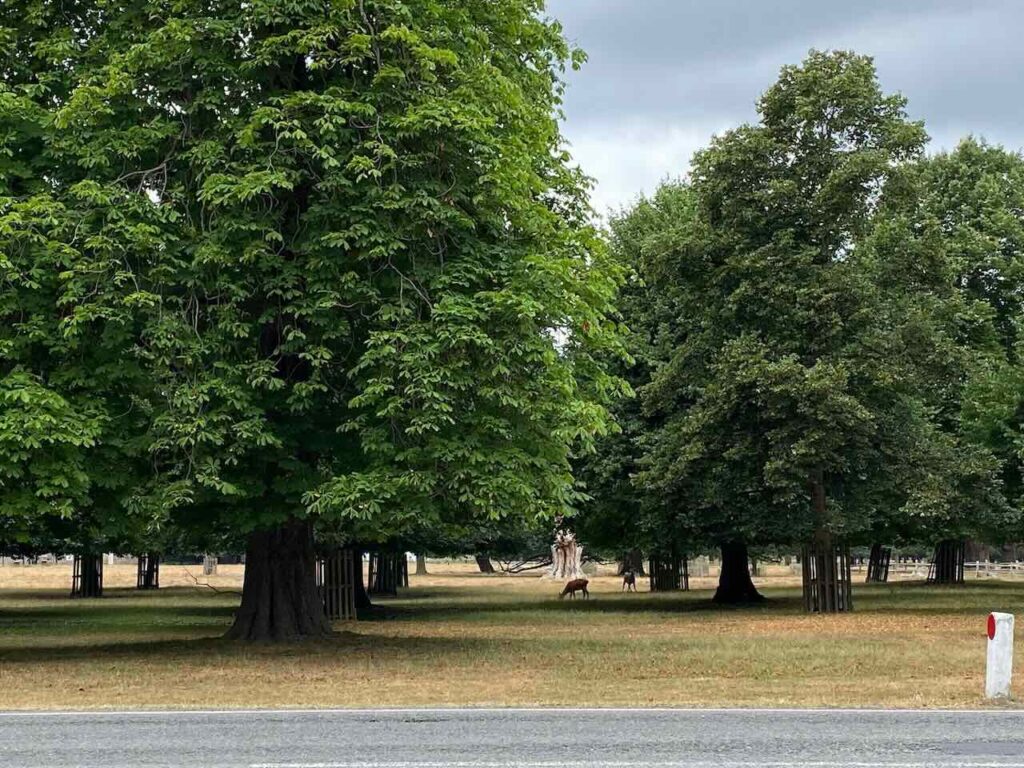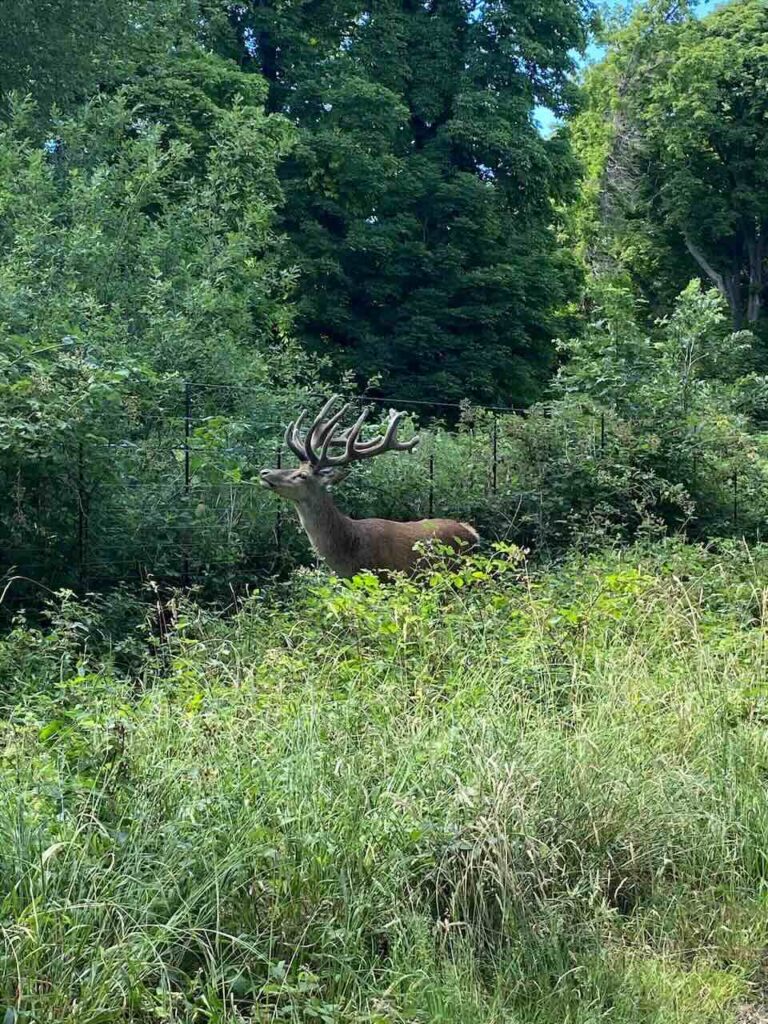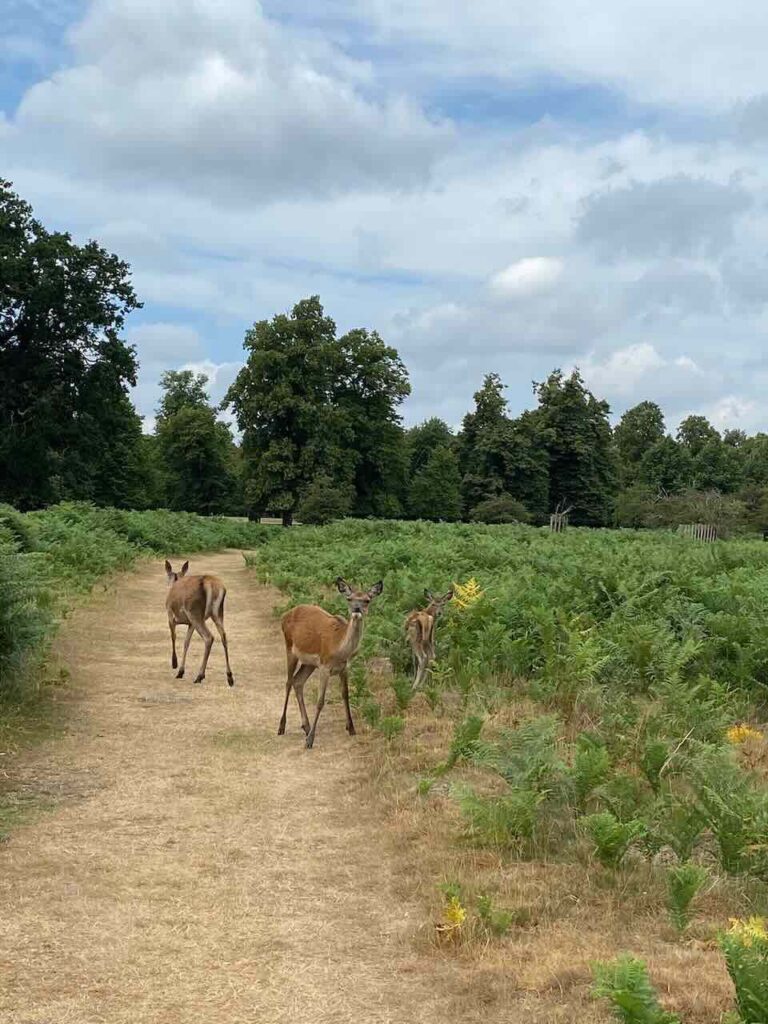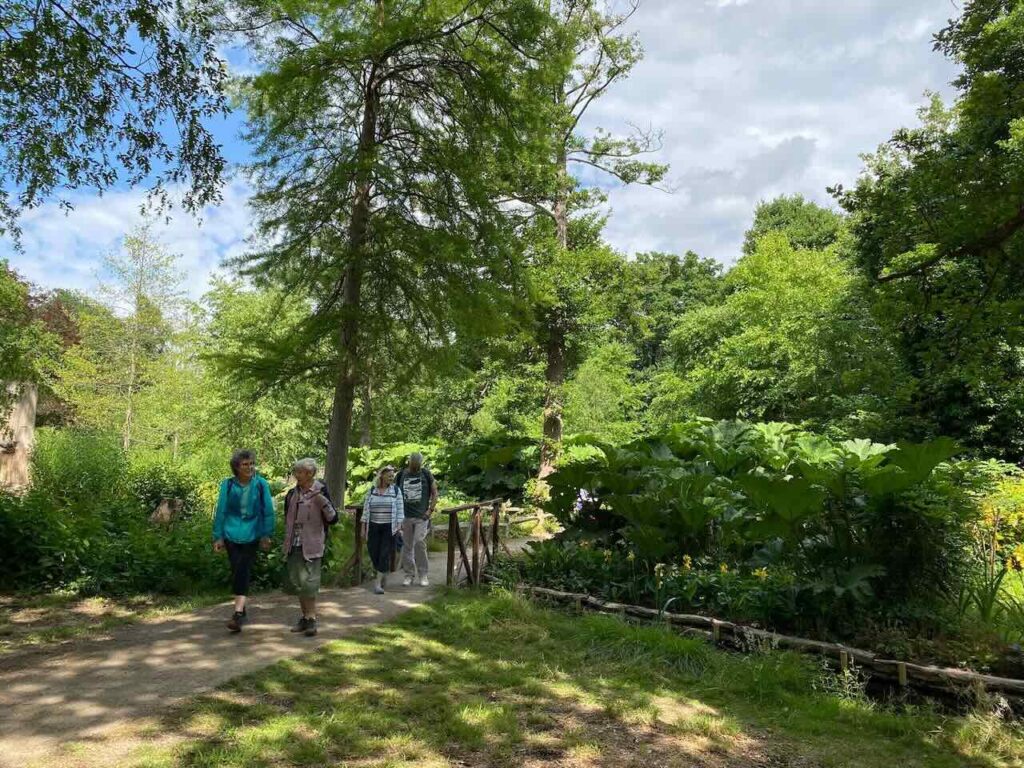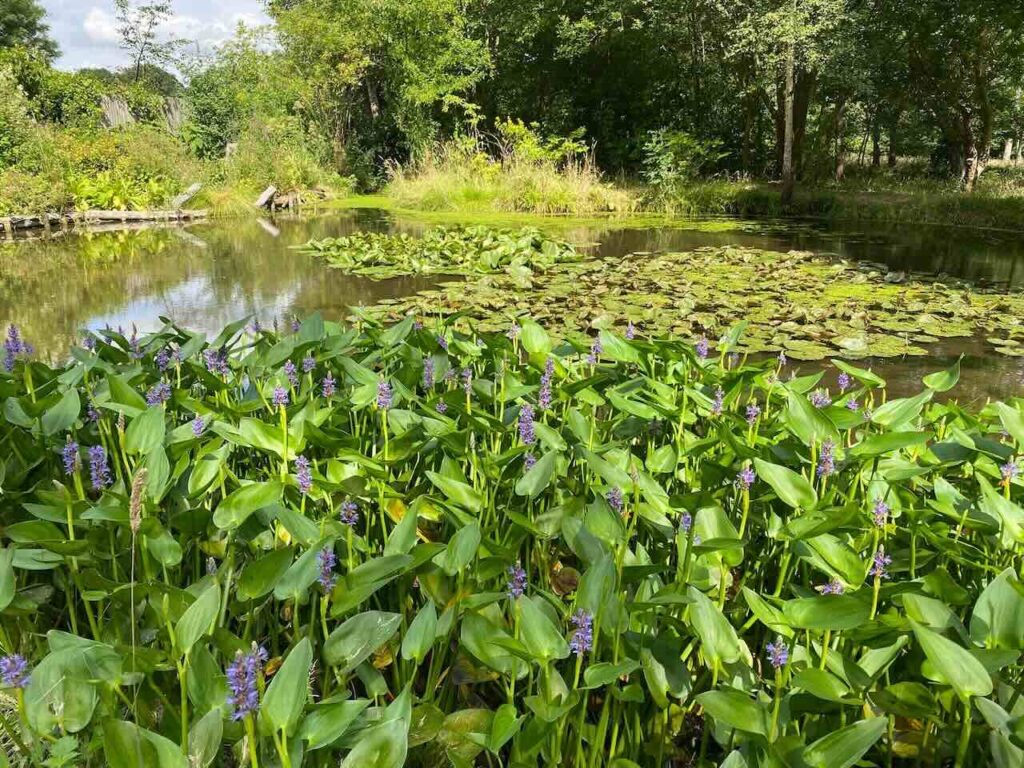The week before my walk had been very hot and there were heat health warnings in the run-up to the date. According to the Met Office it was the fifth warmest July since records began in 1884 (i.e. above average)! I was worried participants might be affected or deterred! But it was Wimbledon Finals week so there was always a chance of rain! I was bitten by a wasp the day before (through my gardening glove!) while putting my compostables in my compost bin and my hand had swollen up and gone purple (It is still discoloured and causing occasional splurges of red blotches and agonising itching all over my body!). What if I got anaphylactic shock and couldn’t lead the walk?!! There had been a shooting incident opposite the Park Gate Inn in Hollingbourne the Monday before (according to the Metro), including armed officers, life-changing injuries and a bomb disposal team! Would the whole village be cordoned off?!
As it turned out, the weather continued to be hot but as we walked up the slope from the village above the North Downs Way there was a pleasant, light breeze to keep us from boiling over. The village of Hollingbourne itself was quiet apart from pilgrims getting ready to continue on the Pilgrims’ Way towards Canterbury. We didn’t see the Park Gate Inn and the Dirty Habit pub is currently barricaded with builders’ scaffolding as it undergoes restoration.
We made our way up the hillside, pausing occasionally to admire the views and the wonderful countryside. After taking time to admire the wild boars and cooling shade of a wood, we carried on to the
highest point of the walk where we paused for our lunch break, either at a picnic table and bench or in the shade of some trees, after which we availed ourselves of the facilities at the Hook and Hatchet pub, Hucking, and slaked our thirst.
Suitably refreshed, we set off westwards and then down the hillside, now empty of sheep and lambs that we saw on our last visit two years ago, without incident this time. Our route took us under the highspeed and standard railway lines and the A20 and into Moore Meadow. Miss Pauline Moore lived in Bearsted all her life, running her own riding school, and donated the land to Bearsted Woodland Trust “for the recreation and enjoyment of everyone”, to prevent it falling into the hands of developers. Thank goodness the Kent International Gateway Group’s plans to build a large freight and logistics depot in the area were rejected by the local planning authority, following significant objections raised by local residents,
including Miss Moore!
On leaving the Woodland we passed the Holy Cross village church where I always pause to reflect on the stone in the churchyard in memory of a villager, John Dyke, the last person to be hanged at a public execution in Penenden Heath (in 1830), for burning a hayrick, of which it later emerged he was innocent!
And so to the village green, where cricket was in progress, and the White Horse pub where some of us paused for refreshment and others proceeded to the station for the train back to the heat and stress of London. What a lovely walk it turned out to be! I hope my eight walking companions enjoyed it as much as I did!
I have since been reminded that on the North Downs Way we met a solitary man coming the other way. He was walking the whole NDW which apparently takes about two weeks. We wished him well and continued on our way. It made me think of the pilgrims who, over the centuries, have trodden the same path on their way to Canterbury and also that I prefer walking with friends, rather than alone!
Pam

